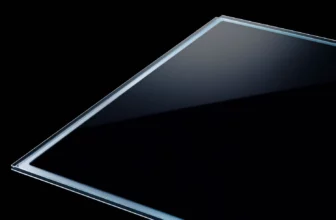Imagine a house that stays warm in the middle of winter without heating. Yes, without radiators, without stoves, without heat pumps… and yet, it's a comfortable 23 °C inside, even when the thermometer drops to 6 °C outside. It seems too good to be true, right? And yet, this is exactly what a revolutionary design by Olivier Sidler, 77 years old, a former engineer specialized in energy management, has achieved in Pont-de-Barret, a peaceful commune in the Drôme region, with “La Poutinière”.
A house that defies the cold thanks to its design
The secret of this house lies in a well-thought-out architectural concept and ultra-high-performance insulation. The idea is simple: instead of heating the interior with energy (and thus money), why not prevent heat from escaping in the first place?
We are talking about a passive building, a true “thermos-house”. No heat leaks, maximum use of solar gains, and intelligent management of ventilation… The result: a house that stays naturally warm in winter and cool in summer.
And if you think that this type of construction costs a fortune, think again. With a construction price of 1900 euros/m² excluding tax, similar to that practiced in the social housing sector, this dwelling demonstrates that it is possible to reconcile high energy performance with an affordable cost. This achievement has also served as a model for the Ardèche social housing provider, which initiated a project to construct HLM housing without a conventional heating system.
Insulation and airtightness: the keys to success
One of the fundamental elements of a passive house is its insulation. Here, there is no question of having walls that let heat escape! Highly insulating materials are used, often well beyond current standards. The walls, with remarkable thickness exceeding 50 centimeters, are made from an innovative assembly of rice straw and Biofib – the latter being an ecological composite made of cotton, linen, and hemp. This structure provides insulation that is twice as effective as that of conventional homes.
At the floor level, a robust concrete slab is installed on a 25-centimeter layer of polystyrene, forming a particularly effective thermal barrier that prevents any heat loss through the flooring.
The windows are also a crucial point. Gone are the days of simple glazing where the cold air stealthily creeps in (you know, that little icy breeze that caresses your feet in winter!). Instead, ultra-efficient triple glazing is installed to prevent thermal loss.
But that's not all: airtightness is paramount. In a traditional house, there are leaks everywhere – walls, roof, electrical outlets… A passive house, on the other hand, is almost airtight. Everything is meticulously assembled to avoid any energy loss.
Optimized sunlight and high-tech ventilation
Have you ever wondered why traditional houses do not fully take advantage of the sun? A passive house does. And it does it well!
The building's orientation is designed to capture maximum heat in winter. Large south-facing bay windows allow sunlight to flood the interior space and naturally warm the ambient air. What we call “free solar gains”.
We calculated the size of the windows down to the centimeter. Each bay window is positioned to maximize solar gain in winter while avoiding summer overheating.
Olivier Sidler
And to prevent the house from becoming an oven in summer, solar protections (such as sunshades or blinds) prevent overheating.
Upstairs, the bedrooms benefit from a particularly clever thermal regulation system. Under the larch flooring are concealed raw earth bricks that act as natural thermal accumulators. These elements capture excess heat during warm periods and release it gradually when temperatures drop, thus ensuring a constant thermal comfort between 19 and 27 degrees throughout the year.
The production of hot water also reflects a sophisticated energy approach. Two compact electric tanks, perfectly insulated, are placed in close proximity to consumption points. Their operation is synchronized with photovoltaic production, as they are programmed to run exclusively between 10 am and 4 pm, the periods of optimal panel efficiency. This system is complemented by a heat recovery system on gray water, reducing energy consumption related to hot water production by 40%.
To top it all off, a controlled mechanical ventilation (CMV double flow) ensures a constant renewal of indoor air without heat loss. In practice, the outgoing warm air transfers its heat to the incoming fresh air. The result: a healthy and temperate interior all year round, without unpleasant drafts.
A house that consumes… almost nothing!
And the cherry on top? This house is incredibly energy-efficient. While heating currently represents more than half of the energy expenses of a traditional dwelling, here, the bill is minimal.
In some cases, simply boiling a kettle or the body heat of the occupants is enough to maintain a pleasant temperature! That shows just how effective these houses are.
Some even go further by producing more energy than they consume thanks to solar panels or energy recovery systems. We're talking about positive energy houses.
What if this were the future of housing?
In the face of the challenges posed by climate change and rising energy prices, passive houses could very well become the standard. Already, some countries like Germany and Sweden have adopted regulations that promote their development.
In France, interest in these constructions is growing, notably thanks to new thermal regulations (such as RE2020) that encourage more efficient and less energy-hungry buildings.
And honestly, who wouldn’t want to live in a comfortable house all year round, without having to dread the arrival of heating bills in winter?
Conclusion: a revolution taking hold
This house without heating that keeps 23 °C even in the depths of winter is much more than just an architectural concept: it’s a revolution. A smart way to design our homes, combining comfort, savings, and respect for the planet.
So, is the future of housing in passive houses? Everything points to yes. And frankly, between paying hefty bills or living in a house that heats itself almost… the choice seems clear, doesn’t it?






Please remain courteous: a hello and a thank you cost nothing! We're here to exchange ideas in a constructive way. Trolls will be deleted.